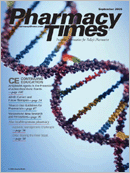Publication
Article
Pharmacy Times
Police and Drug Testing
Author(s):
In late July of this year, The BostonGlobe reported the arrest of 3 officersof the Boston Police Department thatare to have allegedly distributed anabolicsteroids and guarded massive amountsof cocaine.
On the heels of this announcement,Mayor Thomas M. Menino of Boston saidthat he would do his best to see thatBoston officers are tested for steroids.The police union president did notoppose adding steroids to the list of testeddrugs, but he was concerned that thehair test being used by the departmentwas not totally accurate.
No one would dispute that police officershave a dangerous job and thatkeeping in top physical shape is a priorityfor officers, especially those in uniformwho work the street on a dailybasis and have the most chance of seriousinjury or death during something asroutine as a traffic stop. This quest forstrength and fitness can sometimeslead to the use of anabolic steroids—something that is not unheard of in thelaw enforcement world.
In the early 1990s, I assisted in theCincinnati Police Department's randomdrug-testing program by advising it onprescription drugs that needed to bepart of the screen. At the time, I felt itwas one of the more comprehensive inthe country, because we had succeededin including hydrocodone and oxycodone,in addition to trueopiates like morphine andcodeine, into the basictest, along with benzodiazepines.
Anabolic steroids werealso mentioned in our meetings,but as The BostonGlobe alluded to, this testwas expensive, consideringthe small chance that anumber of officers were takingthese dangerous drugs.
One other item westressed was that drug testingof any kind needed tobe witnessed if it was toultimately be effective.Drug users who know theyare subject to random testingwill carry "clean" urinein their underwear and beable to heat it up to anacceptable temperature on the dashboardof their car by running thedefroster.
One officer arrested for drug possessionhad his 7-year-old daughter urinatein a cup before he brought the sample tobe tested. A female officer kept cleanurine in a small container she concealedin her vagina covered with cellophane.Even when it was witnessed, the officerwas able to puncture the cellophane covering,and drop the clean urine into thetest bottle.
So what do most police officers thinkabout drug testing? In the beginning,there was some resistance—usually talkof false positives and possible nightmaresof switched samples—but thisstone wall quickly ended. It endedbecause the vast majority of police officers,as in most professions, do not useillegal drugs and do not condone theircoworkers who do.
This is especially true in police work,since officers oftentimes count on theirpartner or the adjoining beat officer toprotect them in the most dangerous ofcircumstances. Counting on these officersto back them up means being freeof illegal substances so that they can providethe optimum assistance if needed.An impaired police officer is of little useto his or her partner and may actuallycreate a bigger problem than if he or shehad no partner at all.
The question as to whether anabolicsteroids are worthy of being added tothese screens is probably still up fordebate, but random witnessed drug testingfor public safety agencies is not.Police officers and other professionalsthat literally have the public's safety intheir hands should have these programsintact. The public, as well as the officers' coworkers, has the right to expect thatthe people who safeguard them are notimpaired in any way.
John Burke, commander of the Warren County, Ohio, drug task force and retiredcommander of the Cincinnati Police Pharmaceutical Diversion Squad, isa 38-year veteran of law enforcement. Cmdr Burkealso is the current president of the National Association of Drug DiversionInvestigators. For information, he can be reached by e-mail at [email protected], viathe Web site www.rxdiversion.com, or by phone at 513-336-0070.

Newsletter
Stay informed on drug updates, treatment guidelines, and pharmacy practice trends—subscribe to Pharmacy Times for weekly clinical insights.






